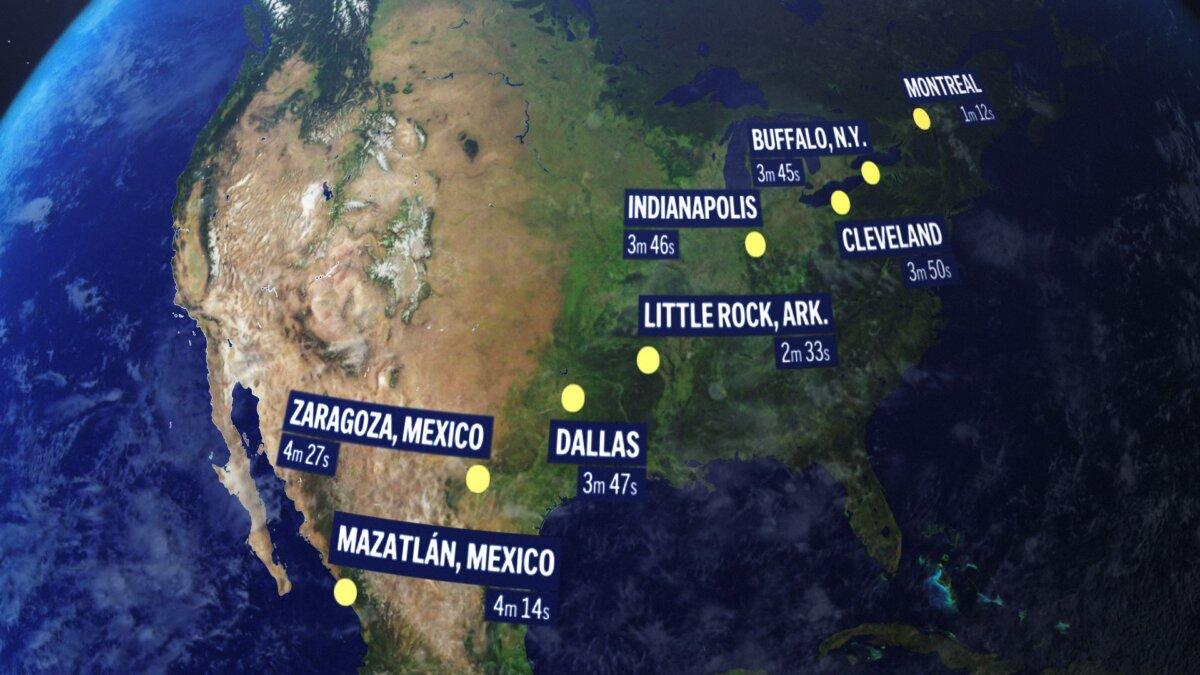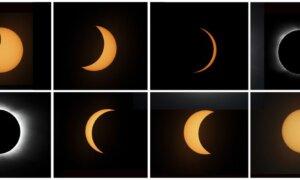Experts caution that the path of totality for the solar eclipse may be subject to shifting
Forecasters are warning that clouds and storms are expected in some key areas on Monday.
Some researchers and NASA scientists are cautioning that there might be a slight change in the solar eclipse path of totality on April 8.
Luca Quaglia, who collaborates with Mr. Irwin, pointed out that older eclipse calculations use a solar radius of 959.63 arc seconds, which he believes may be too small.
“Observations in the last decade have shown that this value is slightly too small,” he told Forbes, mentioning that Mr. Irwin uses a solar radius of 959.95 arc seconds, resulting in cutting about 2,000 feet from the edges of the path of totality.
Another NASA scientist also acknowledged the potential change.
“Calculations that use a slightly larger radius for the size of the sun yield an eclipse path that is slightly narrower,” remarked Michael Kirk, a NASA research scientist, in an interview with the Thrillist website on April 3. He added, “This difference would only affect cities on the very edge of the path of totality, where blanket predictions are difficult, regardless.
“A few city blocks one way or the other could mean 20, 10, or zero seconds of totality.”
The zone of totality for the April 8 eclipse may also be impacted by “uncertainty in the Earth’s rotation,” he told the outlet. That’s because “traveling towards the center of the path of totality—even a mile or two—will quickly increase the length of totality that people can see,” Mr. Kirk said.
Weather Forecast
Forecasts issued this weekend are predicting that clouds are likely to obstruct the view of the total solar eclipse in Texas and other areas along the path in the United States.
Meteorologists are refining their predictions as spectators seek out the best locations to observe the moon blocking out the sun for a brief period.
The path of total darkness extends from Mexico and Texas through Maine and parts of Canada. Several major cities such as Dallas, Indianapolis, Cleveland, and Buffalo lie within the center of the eclipse’s path of totality and may experience about four minutes of total darkness.
“Most of Texas doesn’t look that great for seeing the eclipse,” National Weather Service meteorologist Bob Oravec stated on April 6.
“Severe weather” is anticipated for regions of Oklahoma, Texas, southern Arkansas, and northern Louisiana, with a warning of possible large hail, tornadoes, and severe wind gusts on Monday.
The weather agency highlighted that areas from northern Arkansas to central Indiana could have a good chance of witnessing the astronomical phenomenon, although there is some uncertainty due to the potential presence of high clouds.
Most of Pennsylvania, New York, and all of New England are expected to have clear or partly cloudy skies on April 8, as per weather maps.
However, clouds might obstruct the view in parts of Ohio, Pennsylvania, and New York, as indicated by the weather service’s latest forecast. A clear patch could be visible from northern Arkansas to central Indiana, but there’s still uncertainty about that region, according to Mr. Oravec.

“If you’re going to get clouds, hope to get high clouds,” he advised. “Higher clouds are better—you can see through them.”
Mr. Oravec has made reservations for three spots: He decided to travel to Indianapolis from his home in Maryland, skipping Texas and Rochester, New York.
How to View the Eclipse
If clouds do not obstruct the view, viewers in the path wearing eclipse glasses will witness the moon gradually covering the sun until it is completely blocked, resulting in a period of darkness called totality. During totality when the sun is completely covered, it is safe to remove your protective glasses and look with your naked eyes.
Before and after totality, it is crucial to wear certified eclipse glasses to prevent permanent eye damage. Cameras, binoculars, and telescopes must be equipped with special solar filters for safe viewing.
The Associated Press contributed to this report.





